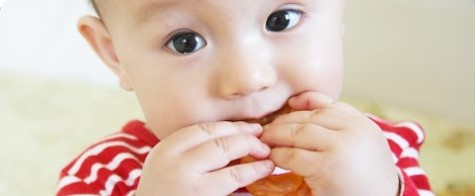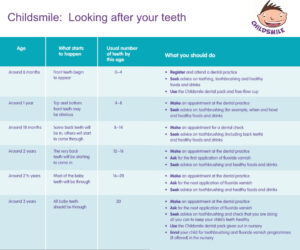Teeth normally appear at around six months.
You may spot the first signs of teething at around three months. These signs include:
- dribbling more than usual
- red cheeks
- sore red gums
- loss of appetite
- irritability
- disturbed sleep
- restlessness
- rubbing their ears
- a mild temperature
- increased biting and chewing on their toys – or you!
These signs usually start around three-to-five days before the tooth starts to appear.
Bear in mind that symptoms like a runny nose, high temperature, vomiting or diarrhoea aren’t usually signs of teething, so talk to your GP or call NHS 111 if your child is showing any of these symptoms.

Easing teething
Gently massaging gums with a clean finger or a dry toothbrush, or using a teething ring, can be soothing for teething babies.
Excessive dribbling can irritate your baby’s chin, neck and chest, which can become dry, chapped and sore. Try to keep the skin as dry as possible and change any wet clothing. Apply a simple barrier cream to keep the skin soft and smooth.
Ask your health visitor or dental team for advice on how best to help your baby at this time or visit Parent Club – Teething for more ideas.

